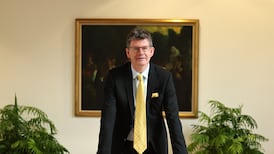A US couple used genetic selection of their embryos to have a baby whose cells could be harvested in an effort to save the life of their seriously-ill first child.
The procedure may save the life of the girl but has raised a multitude of ethical questions, according to medical specialists.
A test-tube baby, Adam Nash, of Englewood, Colorado, was born on August 29th after being genetically screened as an embryo before being implanted in his mother's womb. On September 26th, life-saving stem cells taken from Adam's umbilical cord were transplanted into his sister Molly as a treatment for a rare inherited disorder.
Both children are reportedly doing well, but Molly's chances of survival with the disease, Franconi anaemia, were greatly improved, according to doctors treating her.
"We knew we were running out of time," said Dr Charles Strom, director of medical genetics at Illinois Masonic Medical Center, where the genetic testing was done. Now, he said, the girl had an 85 to 90 per cent chance of being largely free of the bone marrow disease. Doctors should know within a week.
The embryos, provided by the children's parents, Lisa and Jack Nash, were screened to ensure the best possible transplant match for Molly.
Creating children to be used as donors was "wrong", according to Dr Paul Veys, of London's Great Ormond Street Hospital. "This is a very difficult issue . . . It is a start towards being able to choose the right-coloured eyes and the right intelligence. I believe it is wrong and unethical to have a child as a donor. We discourage parents from doing it."
A spokesman for the antiabortion charity Life expressed strong objections to the approach. "That kind of screening belongs in the farmyard," he said.










